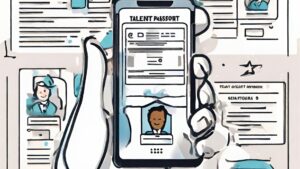The Evolution of LER Ecosystem: Navigating Lifelong Learning and Careers
In the digital age, our learning and career journeys have transcended traditional boundaries, thanks to the dynamic Learning and Employment Records (LER) ecosystem. This ecosystem represents a transformative shift in how we document, access, and leverage educational and employment experiences. From its humble beginnings to its current state of global collaboration and standardization, the journey of the LER ecosystem is a testament to the power of innovation and lifelong learning. In this article, we delve into the fascinating history of the LER ecosystem, exploring key milestones and developments that have shaped its evolution.
The Evolution of the LER Ecosystem:
Early Conceptions (Pre-2000s): In the early days of computerization in education, the idea of electronic education records was still taking shape. This era marked the initial efforts to digitize academic transcripts and records, transitioning from traditional paper-based systems.
Emergence of E-Portfolios (Early 2000s): As we entered the new millennium, a revolutionary concept called e-portfolios began to gain traction. E-portfolios were essentially digital versions of a student’s educational journey, offering a platform to showcase their academic work, including assignments, projects, and achievements. Although primarily used for academic purposes, e-portfolios hinted at the possibilities of digitized records.
Initial Efforts Toward Standardization (Mid-2000s): In the mid-2000s, the growing popularity of e-portfolios led educators and institutions to consider the need for standardized formats and interoperability. Discussions began regarding how these digital records could be made more universally compatible. Organizations like IMS Global Learning Consortium and ADL (Advanced Distributed Learning) initiated crucial efforts to develop these standards.
Rise of Open Badges (2011): In 2011, Mozilla introduced an innovative concept—Open Badges. This concept aimed to establish a standardized way of recognizing and displaying achievements and skills. Open Badges marked a significant departure from traditional credentialing, offering a more granular and flexible approach to acknowledging an individual’s capabilities.
Development of Credentialing Standards (2010s): Entering the 2010s, the focus shifted toward the standardization of digital credentials and transcripts. Initiatives like the Credential Transparency Description Language (CTDL) and Credential Engine played pivotal roles in defining these standards. Governments and educational institutions started to adopt digital credentials, and blockchain technology emerged as a secure record-keeping solution.
Growth of Learning Record Stores (LRS) and xAPI (2013): Around 2013, a new player emerged in the field—the Learning Record Store (LRS). LRS systems were designed to collect and store learning data, paving the way for the tracking of learning activities across different platforms and sources. Concurrently, the Experience API (xAPI or Tin Can API) was introduced as a specification that allowed learning data to be recorded and shared seamlessly.
Formation of Industry Consortia (2010s): The 2010s saw the establishment of industry consortia such as the Comprehensive Learner Record (CLR) initiative and the American National Standards Institute (ANSI). These consortia focused on developing standardized learner records, aiming to create consistent formats for representing learner achievements and skills.
Integration of LER with Employability (Late 2010s): As we approached the late 2010s, there was a noticeable shift towards connecting Learning and Employment Records (LER) with employability. The LER emerged as a comprehensive record, combining education, training, and employment data. This integration marked a significant milestone in recognizing the holistic nature of an individual’s journey from education to employment.
Proliferation of LER Ecosystem (2020s): The 2020s witnessed a rapid proliferation of LER-related initiatives and platforms. Educational institutions, employers, and governments recognized the potential for LER to enhance education-to-employment pathways. Startups, tech giants, and educational institutions entered the scene, offering a wide array of LER solutions and services.
Standardization and Global Collaboration (2020s-Present): In recent years, efforts to standardize LER formats and ensure interoperability have continued to gain momentum. Global collaboration among governments, educational institutions, employers, and tech companies has aimed to establish common LER standards and practices. This collaborative spirit underscores the ongoing evolution of the LER ecosystem, with a renewed focus on empowering individuals in their lifelong learning and career journeys.
The history of the Learning and Employment Records (LER) ecosystem showcases a journey marked by innovation, collaboration, and adaptation. From the early days of digitizing educational records to the present, where the focus is on seamless integration and lifelong learning support, the LER ecosystem has come a long way in reshaping the education and employment landscape. As we move forward, it is poised to continue playing a central role in empowering individuals to navigate dynamic career paths with flexibility, transparency, and personalized guidance.





